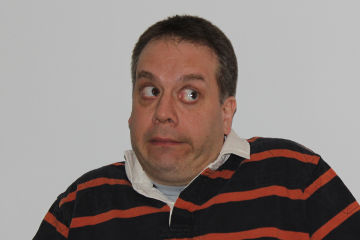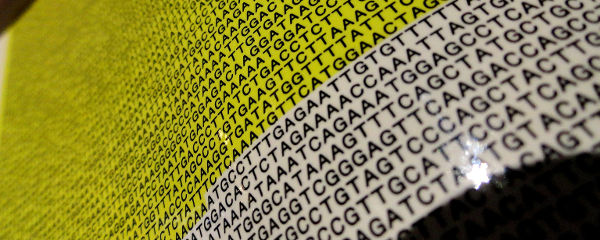What I’ve Learned:
Homeobox: when it comes to transcriptional regulation, it’s not clowning around.
A lot of my confusion about science isn’t really my fault. For instance, when I was in college, In Living Color was on Sunday nights, and a must-watch every week.
So when I stumbled into genetics class at ass-early Monday morning, I still had Homey D. Clown on the brain. Can I be blamed for thinking “Homey O’Box” was Clown’s Irish cousin? It’s a mistake anyone could make, if they were a fan of sketch comedy. And it was before nine AM. And they weren’t very bright.
Eventually I learned that a homeobox isn’t a clown, but a conserved DNA sequence. With very little variation, you can find the 180-base pair stretch in the genomes of most every eukaryotic species, from single-celled fungi to duck-billed platypi all the way up to humans. Including clowns.
When a homeobox gene is expressed, the 180-base stretch translates into a 60-amino acid structure in the resulting protein. Those amino acids form a three-helix structure, which is just the right shape to hook onto the double-helix structure of DNA. So the proteins containing this structure, called homeodomain proteins, are able to bind directly to DNA, which comes in very handy.
That’s because binding to DNA near a gene is a good start to controlling whether or not that gene gets translated into proteins. Some homeodomain proteins, like those in the Hox family, are “master regulators” of transcription, turning genes on and off like an old-timey switchboard operator. This regulation can be triggered in all sorts of ways, but it’s especially important during early development.
As an example, consider the fruit fly — where the homeobox sequence was first identified, back in the 1980s. Scientists found a bunch of Hox-family homeobox genes in flies, and discovered that when one or more of them were mutated, the flies grew in wild and freaky ways. Scramble one gene, and the flies made four wings instead of two. Hork up another, and they grow mouths on the outside of their face, rather than the inside. And a famous Hox mutation makes flies grow legs on their heads, where the antennae should be.
This may be similar to a mutation I assume Abe Vigoda has, which caused him to grow woolly caterpillars where his eyebrows should have been.
Homeobox genes appear to have been with us for a very long time — since before there was an “us”, in fact. They’re found in organisms as simple as yeast and sea anemones, suggesting that the homeobox sequence first evolved in some ancestor common to all the species where it’s seen today; that ancestor would be around 600 million years old, or way before humans made the party. Or clowns. Hell, even Abe Vigoda might not have been born yet.
There’s also a chance we swiped our homeobox tricks from some ancient pre-dinosaur Cryogenian-era virus. No modern bacteria or simpler species have homeobox genes themselves, but one bacterial virus called lambda phage does have DNA-binding proteins that look an awful lot like homeobox genes. So maybe some prehistoric proto-sponge yoinked this precious and valuable sequence that every animal, plant and fungus relies on today.
Now that sounds like a heist worthy of Homey O’Box. Maybe Homey do play that, after all.



